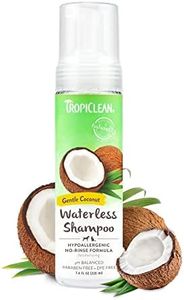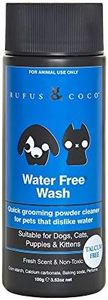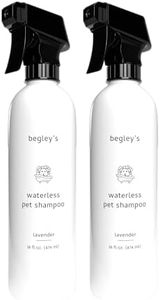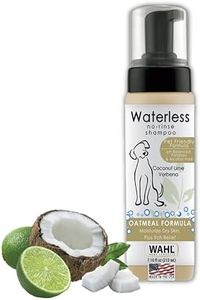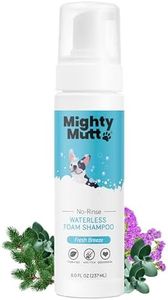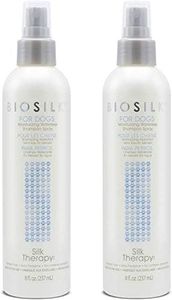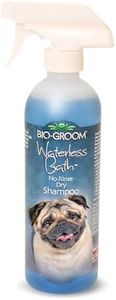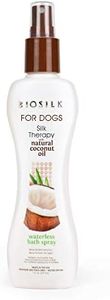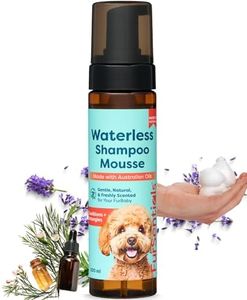We Use CookiesWe use cookies to enhance the security, performance,
functionality and for analytical and promotional activities. By continuing to browse this site you
are agreeing to our privacy policy
10 Best Waterless Dog Shampoos
From leading brands and best sellers available on the web.Buying Guide for the Best Waterless Dog Shampoos
Choosing the right waterless dog shampoo involves understanding your dog's skin and coat needs, your grooming routine, and the specific situations where you'll use the product. Waterless dog shampoos are great for quick cleanups, sensitive pets, or when regular baths aren't practical. To make the best choice, focus on ingredients, ease of use, coat type suitability, scent, and any special considerations like allergies or sensitivities.IngredientsThis refers to the list of substances used to make the shampoo. Ingredients are important because they impact your dog’s skin, coat health, and possible allergic reactions. Formulas can be natural, containing plant-based extracts, or synthetic with cleaning agents. Natural ingredients are generally safer for dogs with sensitive skin, while synthetic ones may have stronger cleaning power. If your dog has allergies, is prone to irritation, or you prefer eco-friendly options, check for gentle, recognizable ingredients with minimal chemicals or artificial fragrances.
Formulation TypeWaterless shampoos come mainly as sprays, foams, and wipes. The formulation affects how the product is applied and how convenient it is. Sprays can be quick for all-over cleaning, foams offer more control for specific areas, while wipes are very portable for small messes, paws, or travel. Choose based on how you plan to use it—wipes for paws or outings, sprays for fast freshening, and foam for more thorough cleaning of specific spots.
Coat Type SuitabilityWaterless shampoos may be tailored for short, long, curly, or double-coated dogs. Suitability is important because some formulas can weigh down fine or long fur, while others provide extra conditioning for thick or curly coats. Light, non-residue formulas are better for dogs with sensitive or thin coats, and richer formulas may benefit thicker or longer coats for added conditioning. Consider your dog’s coat type when checking the label or product description for guidance.
ScentThe scent refers to the fragrance the shampoo leaves on your dog. It matters for your comfort and your dog’s sensitivity. Some dogs and people are sensitive to strong smells, while others may enjoy a fresh, lingering scent. Scent ranges from fragrance-free and mild (like oatmeal or aloe) to more noticeable floral or fruity types. If your dog or family members are sensitive to fragrances, opt for unscented or gently scented options.
Hypoallergenic PropertiesThis means the product is less likely to cause allergic reactions in dogs with sensitive skin. Hypoallergenic formulas usually avoid harsh chemicals, dyes, and perfumes. They are helpful if your dog has a medical history of skin irritations, allergies, or frequent itching. If your dog’s skin is sensitive or you want to minimize health risks, look out for labels stating ‘hypoallergenic’ or consult your veterinarian for recommendations.
Residue and FinishResidue refers to any stickiness, film, or buildup left on the dog’s coat after use. A good waterless shampoo should clean without leaving a residue that attracts dirt or makes fur feel rough. Some products rinse out better with a towel, while others evaporate cleanly. If your dog has a thick or long coat, or if you want minimal grooming effort after application, choose a formula described as non-sticky or residue-free.
